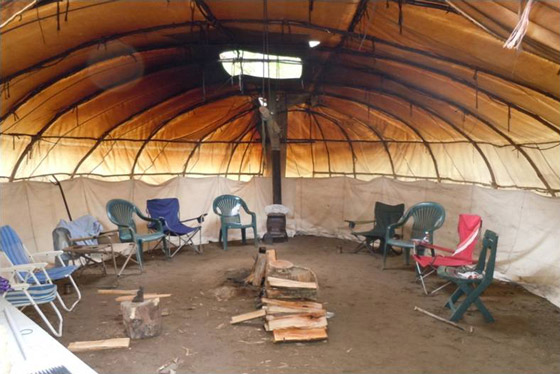The council circle has been a mainstay of American Indian/Alaska Native culture. This cultural meeting setting built around a fire has served Indigenous people as a place where stories are shared, strategies agreed upon and emotional connections strengthened.
Although the council circle may differ based on its cultural context, each gathering is grounded in the following traditions.
A group of people comes together to discuss a particular issue. Everyone around the council circle has an equal chance to speak. A “talking stick” is circulated in clockwise fashion around the circle to identify the speaker. Oftentimes, the talking stick is an object of particular cultural significance to the group.
Participants speak only when it is their turn. While they are awaiting their opportunity to speak, they are encouraged to listen intently to others without interrupting the person who has the talking stick.
Members of the council circle are not required to speak at all. They can remain silent and forego their chance to talk until their turn comes around again.
The leader of the council circle is responsible for maintaining the circle protocol.
According to the Ojai Foundation Center for Council Training, the council circle improves meetings in the following ways.
It enables people to speak from the heart by pushing feelings into the conversation. It forces contributors to come out from behind themselves in moments of truth. This increases the meaningfulness of individual experiences.
Secondly, the council circle empowers members to listen from their hearts when a fellow colleague has the talking stick. This requires listening without judgment in the spirit of open-mindedness even if you disagree with the speaker’s words.
Thirdly, the council circle creates an environment of spontaneous conversations. It places participants in the moment as they avoid thinking about what they are going to say. This forces associates to listen completely when their comrades have the talking stick. They learn to wait their turn until the talking stick comes to them to decide what they want to say.
Finally, this contemplative process guides talkers to speak “leanly” by cutting to the chase and avoiding the need to put a little mustard on their comments. By being cognizant of the need for others to make contributions to the discussion, you will use the minimum amount of words to communicate your point. Speaking leanly may mean not talking at all.
Try the council circle practice at your next staff meeting. You will create more honest discussions, realize increased efficiencies and build increased engagement while getting meaningful work accomplished.





Leave a Reply
You must be logged in to post a comment.